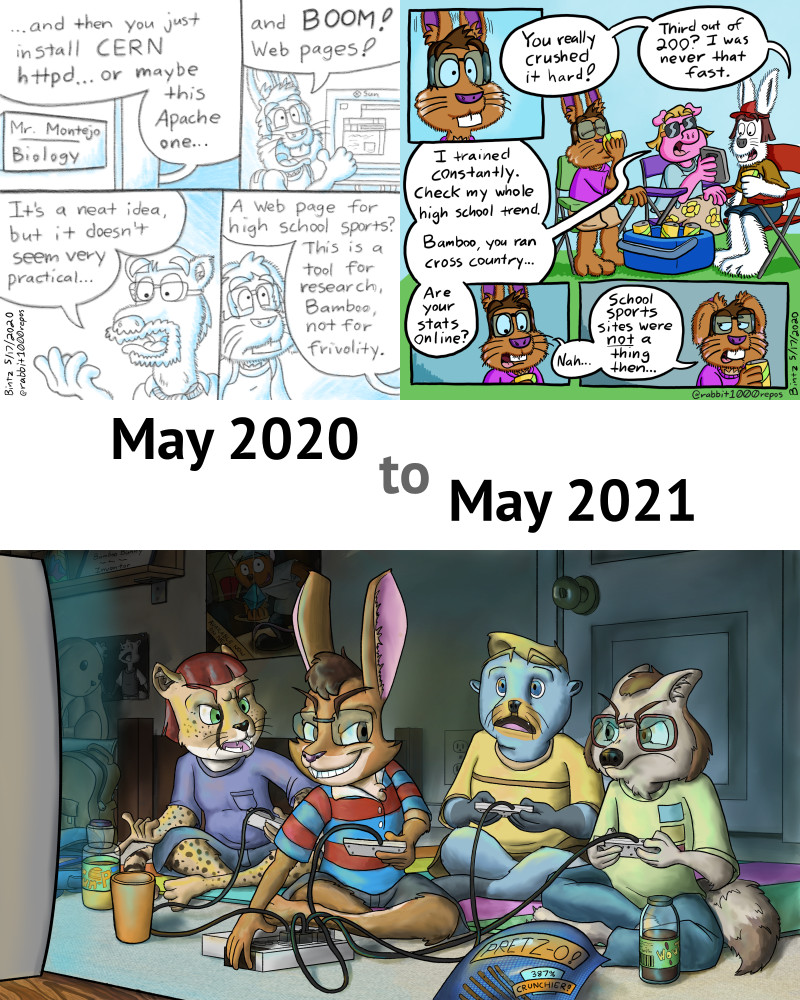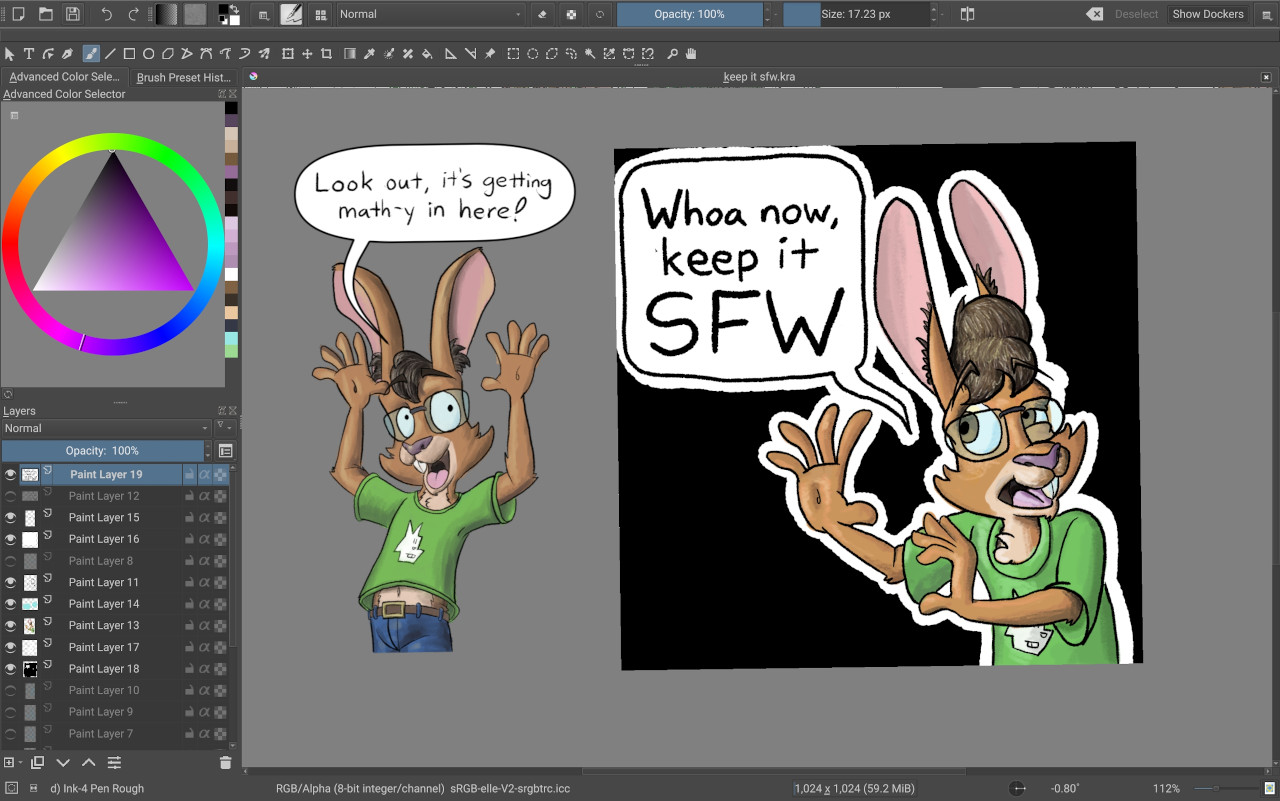I want to use VLC to play music into a separate audio channel for my
The Industrious Rabbit streams.
I wanted to use JACK as I’m running Pipewire. Here’s how I set it up:
- Create a new JACK audio source in OBS for 2 channels.
- Don’t enable JACK output in VLC. I use KDE, so if I keep it on Automatic,
I believe it uses PulseAudio, which is what you want as it keeps the
name of the JACK VLC instance the same between VLC executions.
- Get QJackCtl running and open Graph. You should see the OBS JACK input.
- Start a file playing in VLC. You should see VLC in the Graph.
- Open Patchbay. Patchbay has always confused me until now.
- Add an Output Socket/Plug:
- For VLC
- For the first two output channels
- Add an Input Socket/Plug:
- For the OBS JACK audio source
- For the two channels
- Drag from the VLC output to the JACK input. A green line will connect the two.
- Save the Patchbay definition! This is the step I never realized I had
to do. You can’t do the auto patching until it’s saved. I saved it to my
home directory.
- The Activate button will no longer be disabled. Click it.
- Now, as long as it’s active in the QJackCtl patchbay, VLC will always be
connected to OBS, and the connection will be restored if one or both go
away and come back.
- When you restart QJackCtl, that patchbay option should be there again.
One gotcha is that the volume of VLC will keep resetting to 100% with each
track change. You’ll have to adjust the volume in OBS accordingly, or run
it through some other JACK filter.
Setting up WireGuard within a network in a Docker container
WireGuard is an alternative VPN to something
like OpenVPN. It has a few orders of magnitude fewer lines of code, and
seems really fast in the small amount of time I’ve used it.
I used a few guides to configure it, with this guide
being the main one, along with
the LinuxServer.io image
documentation.
The gotchas I ran into that you might run into as well:
INTERNAL_SUBNET should not be the subnet of the main network you use!
So if your main network is 192.168.123.0, don’t use that as the
INTERNAL_SUBNET.- I run Pi-Hole on the same server as the WireGuard VPN container, and my
router is configured to hand out that address to DHCP clients.
The router also does DNS, as it’s a fallback if the server where Pi-Hole
is running is down. I had to provide additional
dns configuration to the
Docker container, listing off first the router, then localhost, and then providing
the internal IP address of the Pi-Hole server, where the internal server
names are defined, as PEERDNS.
- If you start seeing entries in the WireGuard logs about
[FATAL] plugin/loop,
you know you need to futz with the container’s dns settings.
Other than these issues, it was super easy to set up and use.
2020 was the first time in a very long time I’d put serious study into my art
since college. I have three main resources I used during that pandemic time:
Hopefully once May 2022 rolls around I’ll be even better and faster.
Krita 4.4.3 was released recently, and the Android version
fixed the biggest show-stopper for me to be able to use it: customizations to
the app configuration are now restored on startup, so you can rearrange and
modify settings and they are preserved between app uses.
This means I was able to set up Krita so I could minimize the time needed to
go into the main menu, and not need to use my Samsung Galaxy Tab S7+’s keyboard,
while supporting a workflow similar to the one I came up with for
Clip Studio Paint:
- The addition of Clear and Deselect to the top bar lets me use
Lasso Select for manipulation and erasing much faster.
- Adding Show Dockers lets me hide most of the UI without having to go
into full-blown Full Screen mode.
- I added Mirror View to the toolbar as well so I can quickly flip the canvas
to check my drawings for errors.
- I moved Tool Options to the navigation and out of a docker since I
don’t use it too often. Mainly for Reference Art.
- I moved the Toolbox docker to the top of the screen so all the tools
are laid out in a row. Having them in the side docker meant I had to scroll
up and down a bunch in the docker to find things.
- Everything else on the screen covers my usual CSP workflow.
There are a few things that are missing
- I want to be able to lock transforms to aspect ratio as a tool option to
Transform. Without a keyboard, it’s not locked at all so you have to
be precise when manipulating selections.
- There’s no right-click support on the canvas at all, even with a keyboard
or with a Bluetooth mouse, so vector operations are more difficult.
I went back to drawing balloons by hand like I did in the
Autodesk Sketchbook days of
The Industrious Rabbit.
- More robust balloon handling in general would be great. I don’t care
as much abuot text handling on Android since dealing with fonts is
a total mess.
- I don’t seem to be able to save tags on brushes to be able to group them.
I’ll have to experiment with this more.
I plan on doing all the art for the next The Industrious Rabbit post in
Krita to give it a real good workout. So far, so good!

